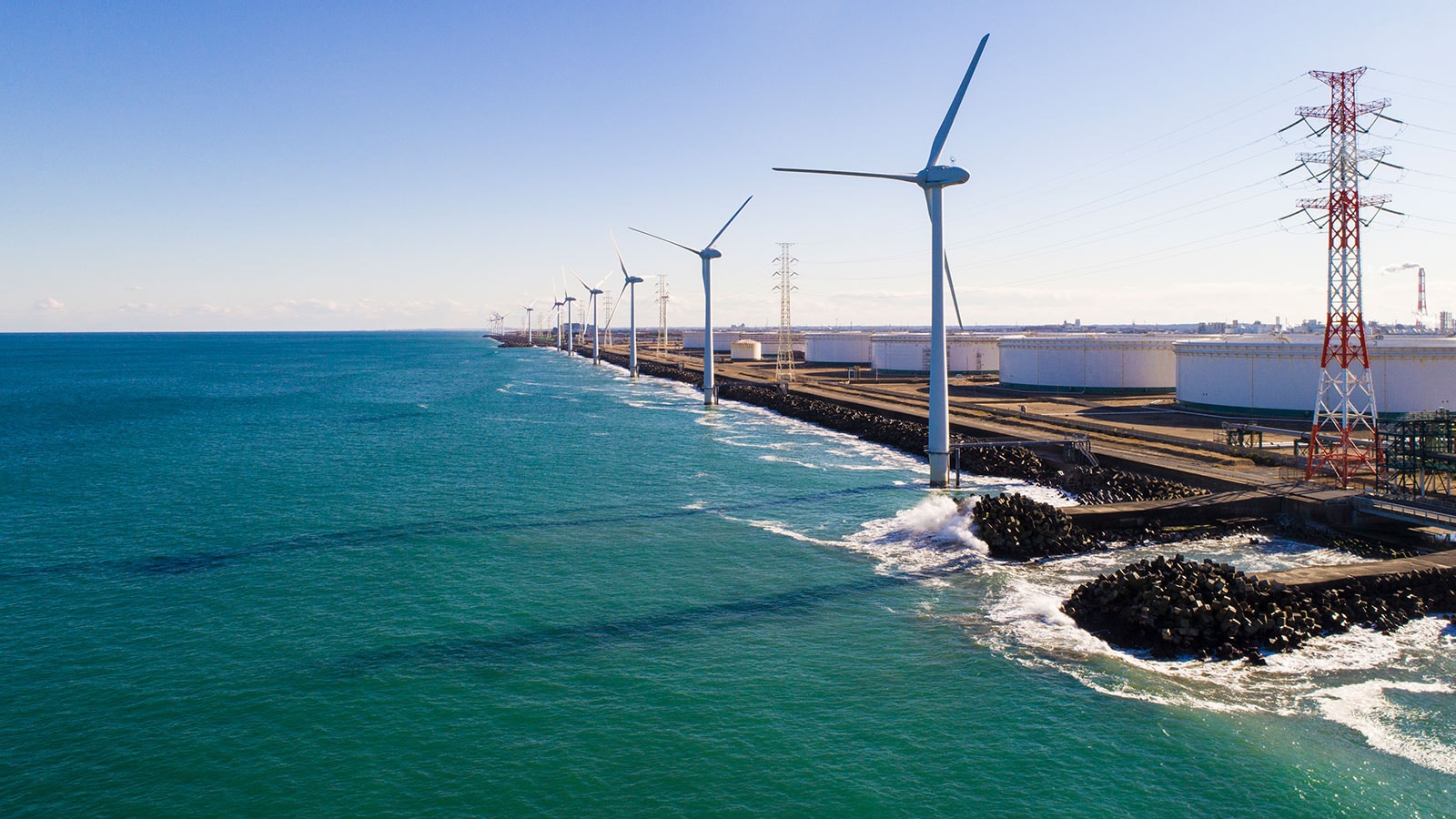Increased Co2 costs
The aftermath of the COVID-19 pandemic and the onset of the war in Ukraine had a significant impact on the energy market, leading to a strong increase in the cost of CO2 in 2021 and 2022. The current cost (at time of writing) of about 80 euros/ton is in line with projections for a Paris agreement compatible scenario. This incentivises companies to switch sooner to low-carbon energy sources as a way to lower their operating costs.
However, it is clear that the increase in CO2 cost has paused which could have an impact on how fast society progresses towards net zero.

Too low low-carbon energy sources
The availability of low-carbon energy sources, such as green hydrogen and renewable electricity, is also currently far below what’s needed to be compatible with the Paris agreement. Meeting this target would effectively mean increasing the supply of electricity fivefold, and exclusively from renewable sources by 2050. By that time, green hydrogen supply would also need to increase from about zero today to three times the energy equivalent of the total European Union (EU) electricity demand (compared to 2021 data). This seems highly unrealistic and leads us to dismiss the Paris agreement as a possible outlook.

The most likely scenario
These elements lead us to conclude that the most likely scenario is an intermediate between the ‘business as usual’ and the ‘accelerated transition’ views, considering the relatively high cost of CO2 on one hand and the low availability of green hydrogen on the other. Electrification should be prioritised where possible, with a switch to hydrogen in the longer term.
The urgency to address climate change, as emphasised by the Paris Agreement with its limits on greenhouse gas (GHG) emissions, has incited companies to explore alternative energy sources. The accord underscores the crucial role of renewable energy in achieving climate targets, urging nations to shift towards cleaner and more environmentally friendly sources. By emphasising this transition, the Paris Agreement encourages a global paradigm shift towards a more sustainable and resilient energy future.
The urgency to address climate change, as emphasised by the Paris Agreement with its limits on greenhouse gas (GHG) emissions, has incited companies to explore alternative energy sources.
The Belgian example
In this context, it’s expected that many countries will adopt a similar approach. Here, we specifically consider the example of Belgium. Natural gas demand is set to decrease in every ambition level and nearly reach zero in 2050 for the two most ambitious levels. There’s no local supply of natural gas in Belgium. Its current (at time of writing) carbon footprint of 430 kg CO2e/MWh is high, but will gradually phase out.

Electrification could be a prime candidate for a smooth energy transition as it’s mature, readily available and, depending on the energy mix available locally, can have a minimal carbon footprint. Indeed, its carbon footprint is 10-40 kg CO2e/MWh when produced with renewable sources and 5 kg CO2e/MWh with nuclear power, which is significantly lower than natural gas. With this in mind, electricity supply is forecasted to increase substantially by 2050, with high variability depending on the level of ambition. Electricity demand is also expected to increase, however not as fast as supply, meaning that in all the ambition levels, Belgium is projected to have a higher supply than demand for electricity by 2050, mainly caused by the increased proportion of renewable electricity in the mix, resulting in some overcapacity. A key driver of this is that countries are committing to increase their electricity production to anticipate higher electricity demand in the future.

Diving deeper into electricity prices, we need to take into account multiple parameters:
We expect taxes on electricity to remain relatively stable.
Of all energy sources, we expect electricity prices to be the most variable in 2050, mainly because clean electricity faces limitations when used at high capacity.
Nuclear power, for instance, requires effective waste management strategies, while renewable energy sources need substantial space and need to account for volatile production.
Nevertheless, countries view electricity production as a necessary step to achieve their sustainability commitments.

Best options for manufacturing
Considering different scenarios and (in this case) the customer’s needs, electricity seems to be the best option for a smooth energy transition. In the longer term, however, hydrogen might appear to be a better choice for the insulation industry. Hydrogen, despite being a mature technology, faces limitations in its usage: Today, we expect significant conversion costs of current assets as machinery designed to run on hydrogen isn’t widely available. Production-wise, the current undercapacity in electrolyzers limits the amount of green hydrogen available. And while the demand for green hydrogen is expected to grow exponentially, demand curves will dictate where the acceleration point will be. We expect green hydrogen to be competitive with alternative (green) energy sources by 2030 as a result of more supporting policies, an increase in green electricity production and expected enhancements in the technology used (improvement of electrolysers and economies of scale). Green hydrogen uses renewable energies to power electrolysers which allows it to have a low carbon footprint (1-9 kgCO2e/MWh) compared to the grey (powered by natural gas - 250 kgCO2e/MWh), blue (powered by natural gas with carbon capture - 85 kgCO2e/MWh) and turquoise (methane pyrolysis process - 25 kgCO2e/MWh) alternatives. Only pink hydrogen (powered by nuclear energy) has a lower carbon footprint: 0.5 kgCO2e/MWh. An appreciable advantage of hydrogen is its high energy density (141.8 MJ/kg) compared to other combustion gases. A smaller quantity (by mass) is required to produce the same amount of energy. However, it’s a very volatile gas making its transportation difficult. Current investments in hydrogen will reduce issues and position it as a viable alternative energy source.
Conclusion
In conclusion, the journey towards sustainable energy in the manufacturing sector is complex and depends on various factors. Succeeding in identifying the specific needs of your company and the future trends of offer/demand between countries is essential for maintaining competitiveness. Finding the right strategy for switching to cleaner energy will help reduce carbon emissions from operations, lower reliance on certain energy sources and keep prices competitive. The complexities of building a resilient energy strategy highlight the need to be informed and supported to pave the way for a resilient and sustainable future.
Contact us












